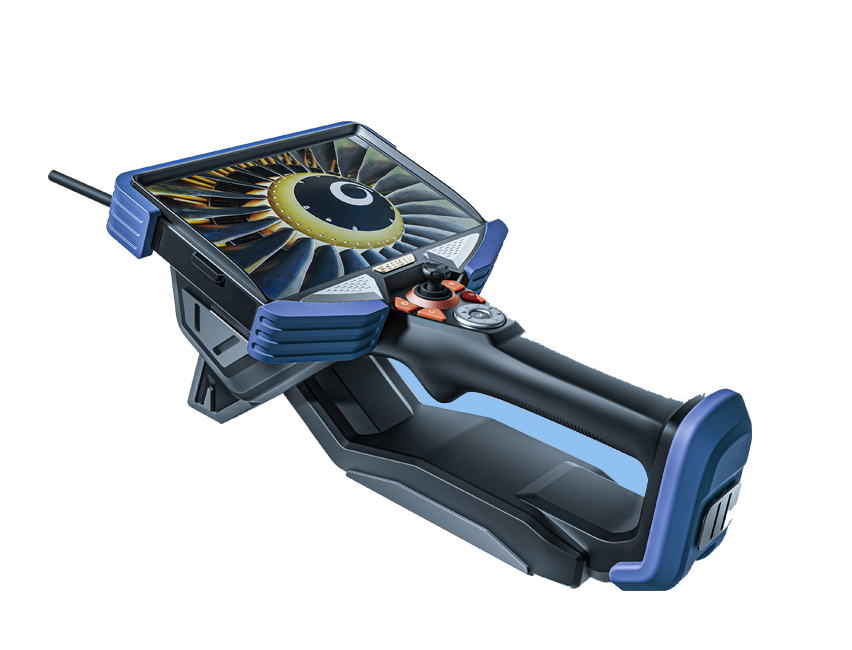Industrial Videoscope: Revolutionizing Inspection and Maintenance Processes
In various industries such as manufacturing, aerospace, automotive, and energy, the need for non-destructive testing and inspection of hard-to-reach areas has led to the development and utilization of advanced tools like industrial videoscopes. These sophisticated devices offer real-time visual inspection capabilities, enabling professionals to assess the condition of equipment and structures without the need for disassembly. This article discusses the essential materials used in the construction of industrial videoscopes and their optimal operating conditions.
Materials Used in Industrial Videoscopes
- Optical Components: High-quality optics are crucial for capturing clear and detailed images. Industrial videoscopes incorporate lenses, prisms, and fiber optic bundles that transmit light efficiently and provide exceptional image resolution. These components are often made from durable materials like coated glass, optical-grade plastics, and specialized coatings to enhance light transmission and minimize distortion.
- Flexible Insertion Tube: The insertion tube is a critical part of the videoscope that allows access to confined spaces. It is typically made of flexible materials such as tungsten braided cables or reinforced plastics. These materials ensure flexibility while maintaining durability, allowing the videoscope to navigate through complex pathways without damage.
- Lighting System: Illumination is essential for capturing clear visuals in dark or poorly lit environments. Industrial videoscopes incorporate LED lights or fiber optic light guides to provide adequate illumination. These components are designed to be durable, heat-resistant, and capable of producing consistent and focused lighting.
- Camera and Imaging Sensors: High-resolution cameras and imaging sensors are at the heart of industrial videoscopes. These components are constructed using advanced materials and sensor technologies that enable the capture of high-definition images and videos even in challenging conditions. They are often protected with rugged enclosures to ensure longevity.
- Control Handle and Cable: The control handle houses the interface for adjusting the videoscope’s articulation, focus, lighting, and image capture. It is typically made from ergonomic materials for comfortable operation. The cables connecting the handle to the insertion tube are designed to be flexible yet durable to withstand repeated movements and bending.
Optimal Operating Conditions
Industrial videoscopes are versatile tools that can be used in various environments and applications. However, to ensure their optimal performance and longevity, certain operating conditions should be considered:
- Temperature and Environmental Conditions: Videoscopes may need to operate in extreme temperatures, from sub-zero environments to high-temperature settings. Manufacturers design videoscopes to withstand these conditions, but users should avoid exposing them to temperatures outside their specified operating range. Additionally, protection against dust, moisture, and corrosive substances is crucial to prevent damage.
- Lighting Conditions: Adequate lighting is essential for capturing clear images and videos. In environments with poor lighting, supplementary lighting sources may be required. Operating the videoscope in well-lit areas enhances image quality and reduces strain on the device’s lighting components.
- Articulation and Navigation: While industrial videoscopes are designed to be flexible, users should avoid over-bending or excessively twisting the insertion tube, as this can lead to premature wear and damage. Careful navigation and articulation will prolong the device’s lifespan.
- Regular Maintenance: Like any equipment, industrial videoscopes require regular maintenance. This includes cleaning the lenses and camera sensors, inspecting cables for wear, and ensuring proper functionality of articulation and lighting systems.
In conclusion, industrial videoscopes play a pivotal role in modern inspection and maintenance practices across various industries. By employing high-quality materials and adhering to optimal operating conditions, professionals can maximize the utility and lifespan of these devices, contributing to safer and more efficient operations.


